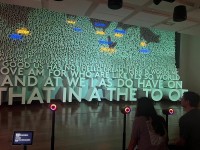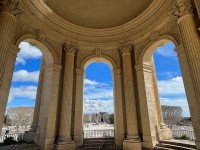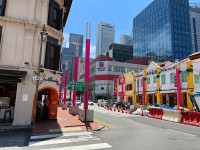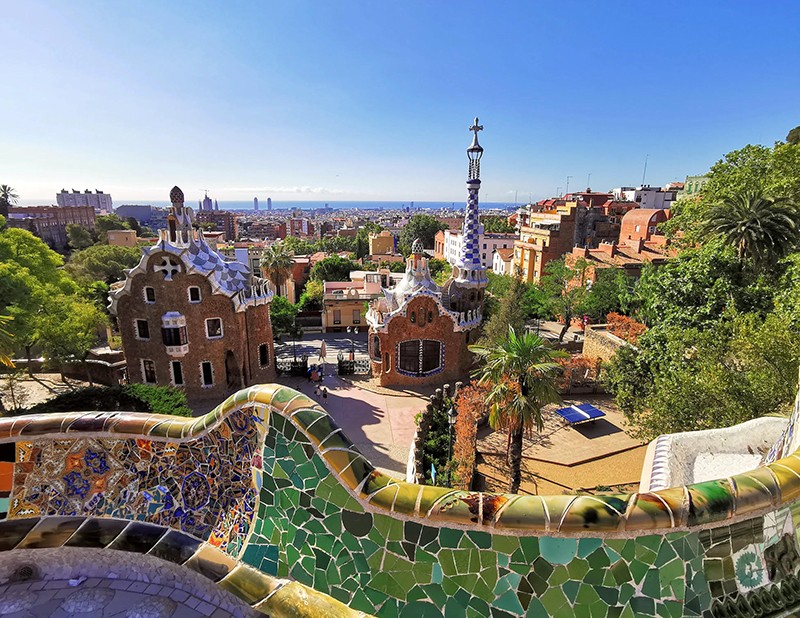 Barcelona
Image: Unsplash
Barcelona
Image: Unsplash
Of People & Places: Gaudi's city
A few days ago, on 17 February to be precise, I came across a write-up on Bengal’s romantic poet, Jibanananda Das. The one whose Natorer Banalata Sen has been recited by countless lovelorns, his lines from Rupasi Bangla recited over and again by well-known elocutionists.
He was born on that date in 1899. But what drew the attention of my somewhat ignorant soul to the article was that he died of an accident on the tram tracks of Rashbehari Avenue in south Kolkata. It immediately took me back to Barcelona as if on a tangent of association. Sounds strange? Not if you think about it. The city’s iconic artist- architect – visionary Antoni Gaudi also died the same way in 1926 a few months short of his 75th birthday.
Towards the end of his life he spent his days almost as a recluse in the premises of his dream construction - La Sagrada Familia cathedral which is yet to get finished.

Jibanananda’s poems remain alive today to stir many hearts. Gaudi’s dream project, though unfinished, attracts thousands of visitors every year from across the world to gaze in astonishment at a cathedral like no other.
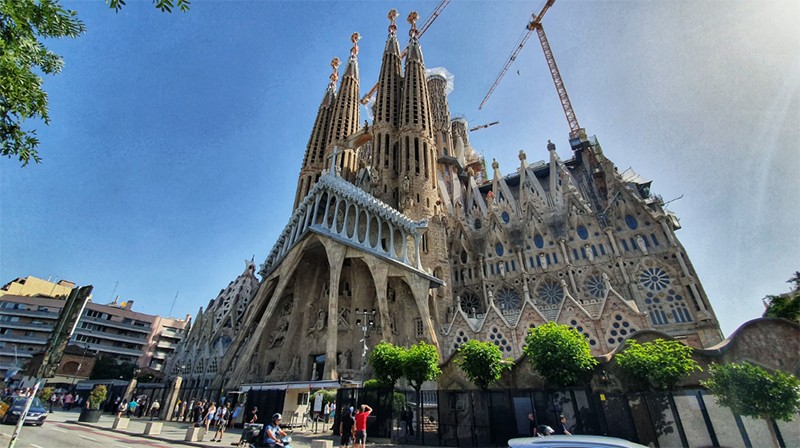
For Gaudi, a deeply devoted Catholic, the cathedral was more like a temple. Looking at the uneven structure of the Sagrada, one can only marvel at his ‘vision.’ Pillars look like trees, there are nooks for birds and animals, and colourful baskets of fruits as offerings tucked into the crevices of the stone façade. Gaudí conceived it in the likeness of a forest, with the columns like trees.
Gaudi broke all the rules of the day when he started conceptualising La Sagrada Familia more than 130 years ago. It was a culmination of his revolutionary look at buildings, many of which he designed for his rich patrons. These are now under the Unesco heritage list.
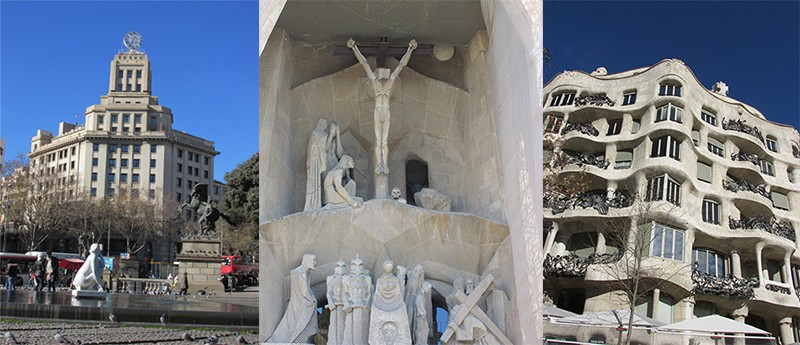
A bachelor and a vegetarian, he almost lived like a recluse in the studio inside the Sagrada, wearing tattered clothes. In fact, as he lay on the street unconscious the passersby took him to be a vagabond and did not bother to take him to the hospital. By the time he was picked up by a police van to take to a hospital, he was already in a bad shape, and eventually when his friends traced him lying in a neglected corner of the hospice, his condition was too far gone to be revived. So the man who had once lived a life of luxury, dressed elegantly, and designed houses for rich patrons, died still calling the name of God.
Gaudi’s name and the Spanish city on the shores of the Mediterranean Sea are almost spoken in the same breath. However, there is even more to Barcelona to make it such a magnet for visitors. It is a perfect combination of the blue sea and the green hills of Montjuic that overlooks the ancient harbor.
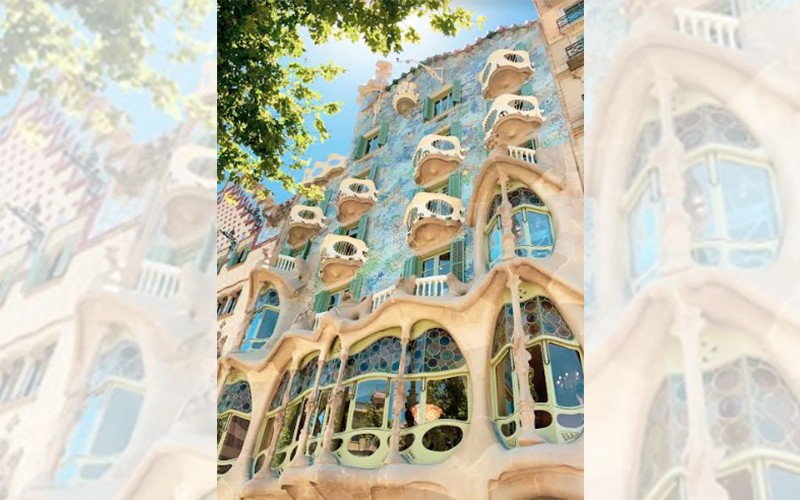
Take a walk in its historical Gothic quarters ‘Barri Gòtic’ and suddenly you are transported to a medieval age. It lies between La Rambla in the west and Via Laietana in the east.
On that walking tour the guide that accompanied our group was a young guy. Perhaps he was a student and was freelancing for the tourism department. But he seemed to be well-versed about the area and communicative unlike many you come across who seem to work in ‘guiding’ just for the money and are least interested in the visitors. Two such on an Italian tour really irked me but that’s another story.
With its stone buildings, narrow alleys and cobbled paths the atmosphere in the Barri Gotic is such that you may feel a little out of sync. Is modern Barcelona just round the corner, or are you time-travelling back to two thousand years?
The Romans had built a city wall - 8 metre thick and up to 18 metre high, with 78 fortified towers to protect the city. By the standards of those days the 1270 metres long wall was an imposing structure. Today it stands witness to the master builders, as also the remaining pillars of the temple of Augustus.
In 714 AD the city fathers surrendered to the invading Moors from north Africa without a fight, that’s how Barcelona escaped a demolition unlike many other Iberian cities.
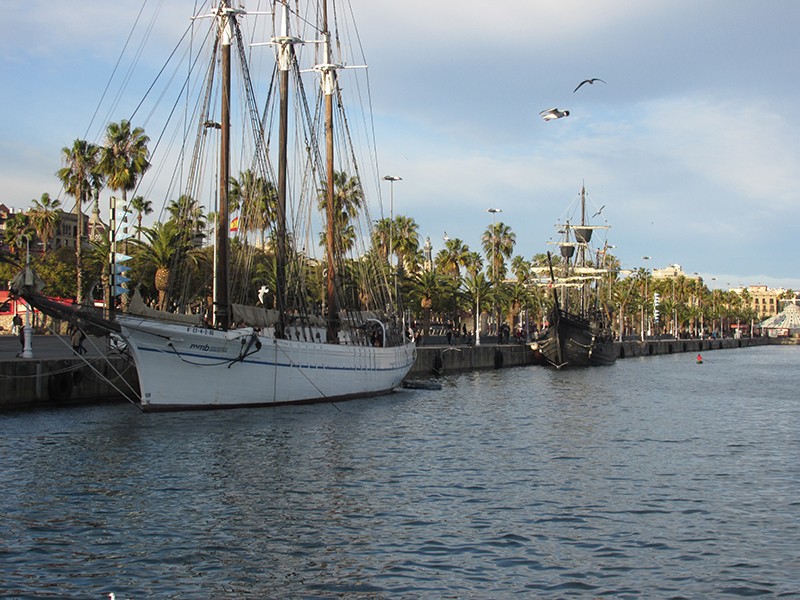
At the centre there is the Cathedral of Saint Eulalia. A gaggle of geese greeted us in the courtyard . They number 13, representing the age of Eulalia, daughter of a farmer. She was killed by the Romans in the early 4th century for her Christian beliefs.
Walking up the narrow alleys we come upon a quiet square, Plaça de San Felip Neri . It was a Jewish cemetery in the former Jewish section. Gaudi was a regular visitor to the church; in fact, he was headed here when he met with the fatal accident. It was a cultural hub during the 11th -14th centuries; intellectuals, poets, and speakers congregated here to exchange ideas much like the café culture that developed later. The buildings still bear marks of bombings during the Spanish Civil War (1936-39) preceding Franco’s takeover of Barcelona. It was also the spot where, according to memorials between 16- 18th March, 1938, there was unrelenting bombardment with 44 tonnes of bombs on the civilians. The Civil War between the Loyalists and Rebels in Spain claimed between 400, 000 to 1,000,000 lives, according to historians.
Perhaps the square is so quiet bearing the memories of so many dead.
I tried to shake off the gloomy aura by stepping into the bustling La Rambla, the promenade where tourists, locals all seem to converge to have a happy time.
La Rambla leads from Placa de Catalunya right to the seaside with the huge Columbus Monument (his finger points to America but some say the finger points to Italy!). The colourful tile designs on the floor of the walkway skirted by flower stalls, fast-food eateries, shops selling knick-knacks, artists sketching your ‘instant’ profile, musical bands playing, from Mexican folk to Salsa, all create an exuberant atmosphere.
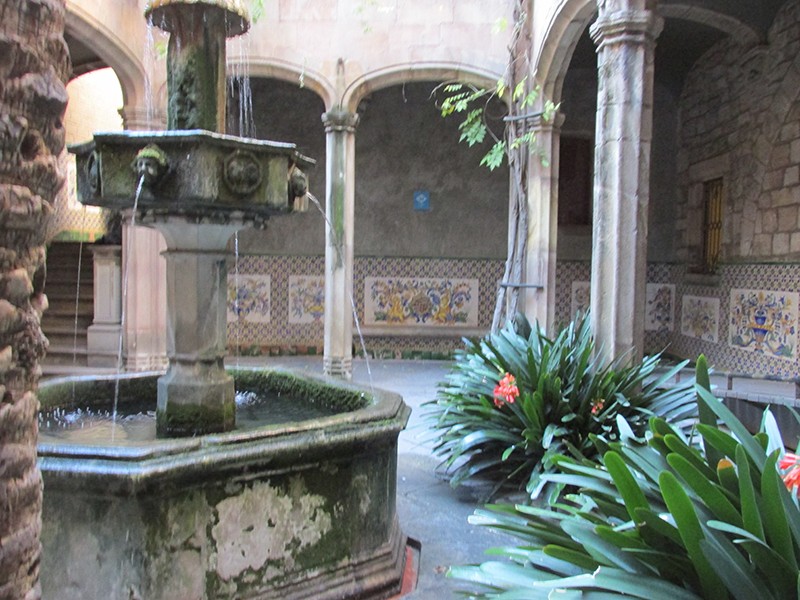
Never mind that naysayers crinkle their noses at the kitschy shops and touristy crowd, the tableaus of actors - beggars if you like, standing stock- still in many avatars - a Charlie Chaplin, a silver-painted space robot, a couple dancing the Tango, it’s people’s place in many hues. I even espied a compatriot – a Bengali, well, from Bangladesh actually, putting up his own kind of show. Of course, by now Bangladeshi vendors filling the streets of Barcelona to Rome are common as I discovered in Italy. And a great help too as the friendly people often led me to the right location when I travelled alone.
Sitting at a restaurant on La Rambla and enjoying a glass of cava , the Catalan sparkling wine, the sight of people from different countries passing by, I understood why the city’s civic motto Barcelona es Teva (Barcelona belongs to you, in Catalan ) works. That pick-pockets also think the same way and relieve many tourists of their purse is another matter. It's a hazard of travelling in popular destinations. You have to be alert, that’s all.
For some time now, Barcelona has witnessed lots of protest marches because the Catalonians- Barcelona belongs to the Catalunya province, want to break away from Spain. Leaders have been arrested and or let off on bail. But I want to remember Barcelona as Gaudi’s city, the sun playing on my face while observing people, young and old, sitting around chatting and enjoying the winter sunlight at the huge Placa de Catalunya square, and the fabulous buildings lining the wide avenues. And, of course, the people on the street are going out of their way to help me find my way. Politics can wait.
Top Headlines
-
Travel
Egypt returns to IFTM Paris 2025 with new travel experiences
September 25, 2025
-
Travel
Royal Sonesta Chicago Downtown: A frontrow river view and urban comfort in the windy citys heart
August 17, 2025
-
Travel
Sri Lanka: Arching to the sky
August 14, 2025
-
Travel
Hotel AKA Washington Circle: 'Residential luxury' close to DC's beating heart
June 24, 2025
-
Travel
Sri Lanka: An offbeat itinerary in a destination for all seasons
May 23, 2025
-
Travel
In crust you trust: Pizzeria Paradiso in Washington DCs Georgetown is mood-lifter
April 18, 2025
-
Travel
Washington DC: Cherry Blossom Rush
April 04, 2025
-
Travel
Take a vibrant journey at Chicago's 'The Orchid Show: India Blooms'
February 10, 2025
-
Travel
Take a vibrant journey at Chicago's 'The Orchid Show: India Blooms'
February 10, 2025
-
Travel
Pompeii: Lying under the ashes
November 19, 2024



